Hello, You All. Here we come with another deployment post. In this post, we will see Cjwdev Group Manager Deployment using SCCM Application Model. We use the MSI application to deploy Cjwdev Group Manager on Windows 10/11 client machines. Let’s also discuss the 0x643 1603 Error and how to fix it.
Cjwdev Group Manager Provides end users with the ability to manage group membership for Active Directory groups they are assigned as managers. You may have noticed that when a user is assigned as the manager of a security/distribution group in Active Directory, they have the option to add and remove members. The only problem is that the user is only able to make these changes through Microsoft Outlook.
For organizations that do not have (or do not want to use) Microsoft Outlook for this purpose, Group Manager was designed to allow users to add and remove users, contacts, and groups to any groups they are managers of. Additionally, it will be useful for organizations moving from Outlook to a hosted Exchange solution, since end users won’t be able to make changes to the local domain through Outlook.
It automatically detects the current users and finds only groups that they are managers of i.e. no configuration is required. Also, End users can add or remove members from any group they manage (users, contacts, computers, or groups).
What is an MSI file?
In this step-by-step guide, we will use the MSI Application Model to deploy Cjwdev Group Manager using SCCM. The MSI model is the best practice for deploying applications on Windows 10/11 devices.
Windows packages that contain installation information, including files to be installed and installation locations, are called MSI files. The EXE and MSI files both install and launch Windows programs. The EXE file may not always contain an installer and may launch its program when double-clicked. An MSI file, however, always includes an installer.
How to Deploy Cjwdev Group Manager Using SCCM
Now we will begin the Cjwdev Group Manager Deployment using the SCCM. As told earlier, we are using the MSI file for Cjwdev Group Manager Deployment. You will see why the availability of MSI files for any application is always a joy for SCCM Admin.
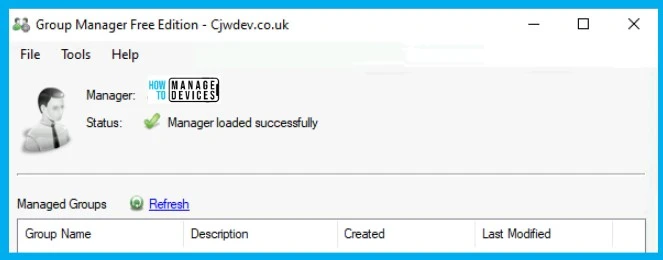
We don’t need to work on prerequisites as we used to tell you in the previous posts where we are using EXE files for the deployment. This MSI has a prerequisite and that is DotNet Framework. More details are below.
- We have to download the MSI installer and the logo of the Cjwdev Group Manager, as we know it is available for download, and our half job is done.
One can easily download the application from Cjwdev Group Manager. When you download the zip file from this location after extracting you will get the windows installer i.e. MSI file for the deployment.
The following table gives you all the details required for the Cjwdev Group Manager Deployment tool using SCCM. This includes the command line for Cjwdev Group Manager silent installation, uninstall, Product Code, etc.
| Name | Install Command Line | Uninstall Command Line | Detection Method |
|---|---|---|---|
| Cjwdev Group Manager Deployment Tool – Windows Installer (*.msi file) | msiexec /i “GroupManagerFreeInstaller.msi” /q | Uninstall -> msiexec /x {97776BEE-9967-4891-B473-B25275B55BB9} /q | Windows Installer- {97776BEE-9967-4891-B473-B25275B55BB9} |
Create Cjwdev Group Manager Application Using SCCM Console
This MSI application deployment guide will use the SCCM admin console to create an application. To start with the Application creation part, copy the downloaded setup to the package source location of the SCCM Server.
- Navigate to SCCM Console \Software Library\Overview\Application Management\Applications.
- Right-click on Applications and select Create Application.
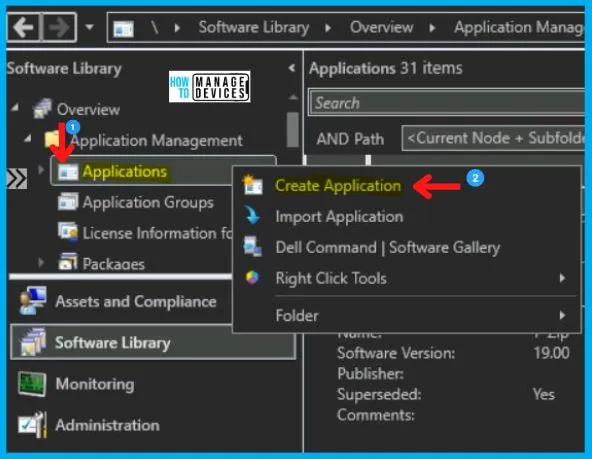
For all MSI application deployments, always Select the Automatically detect Information about the application from installation files and choose Windows Installer (.msi files) in the Type category. Also, enter the UNC Path for the application in Location and click Next.
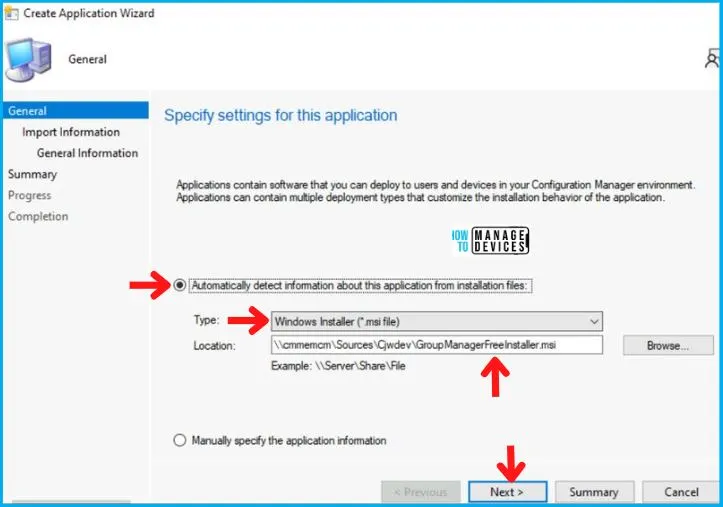
Now, something magical happens here, the thing for which MSI files are so famous. As soon you click on Next, you will see that all the information has been imported from the MSI file, like install commands and detection logic is shown below, and click Next.
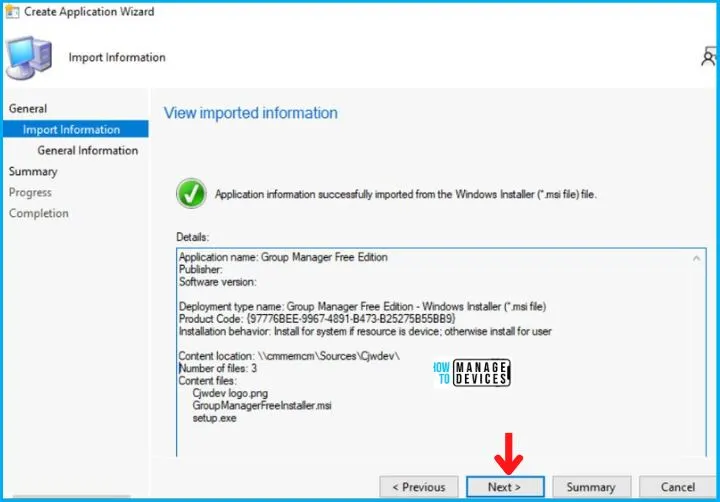
Also, in the General Information Tab shown below, you will see it imports the install behavior/command from the installer itself.
- Silent Install Command Line for Cjwdev Group Manager – msiexec /i “GroupManagerFreeInstaller.msi” /q INSTALL
- Uninstall Command Line – msiexec /x {97776BEE-9967-4891-B473-B25275B55BB9} /q
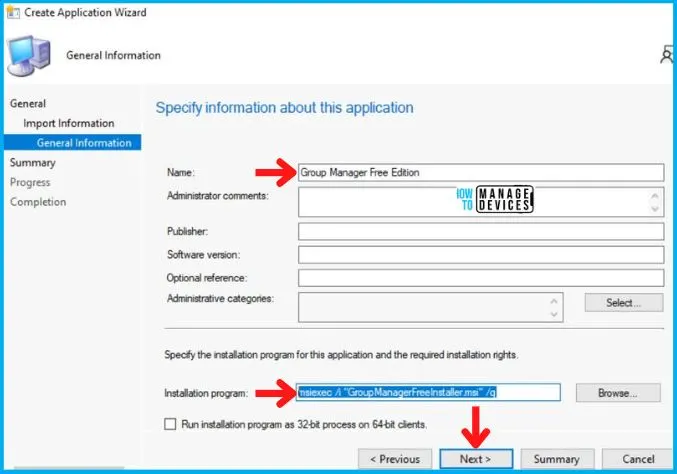
After this, click Next on the Summary Tab and end this Create Application Wizard by clicking on Close in Completion Tab.
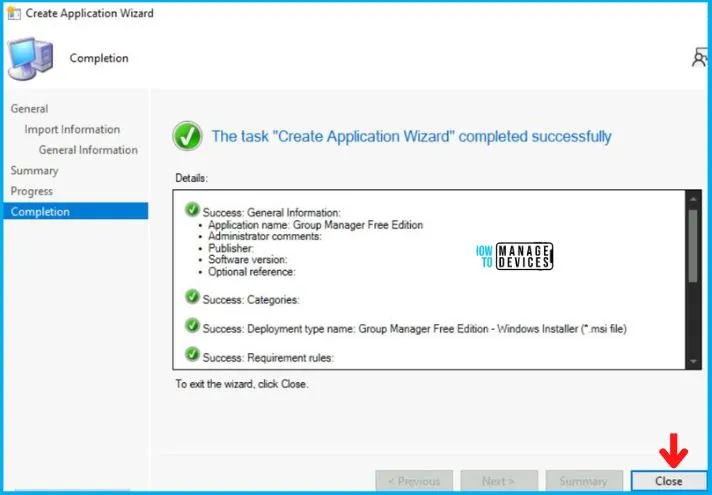
After the creation of the Application, it will appear in the Application Node. Now to Add an Icon to Cjwdev Group Manager, right-click on Cjwdev Group Manager and click on Properties.
After this, choose Software Center Tab as shown below. And click on Browse in Icon, select the icon, and click on Apply and OK, as shown in the image below.
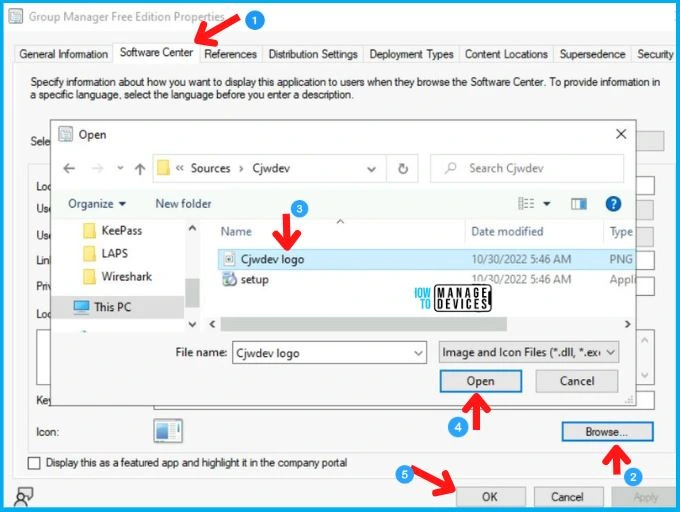
Distribute the Cjwdev Group Manager Application to the DP
After the creation of the Application, it will appear in the SCCM Application Node. To begin with, the distribution right-clicks on the Cjwdev Group Manager Application and clicks on Distribute Content, as shown in the picture below.
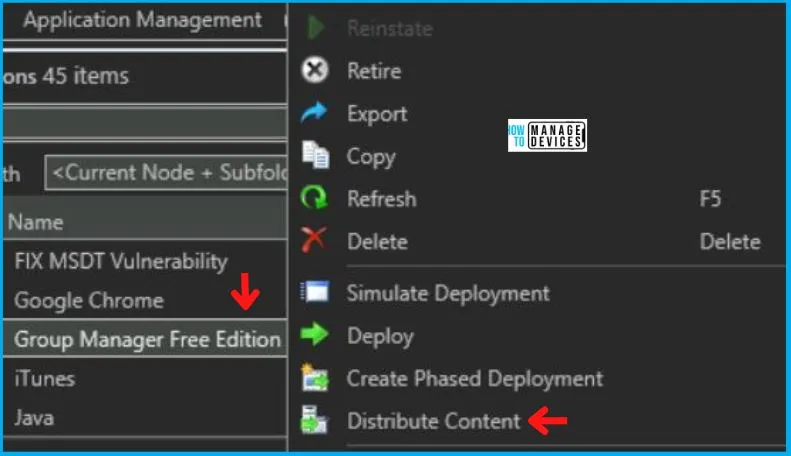
Now the Distribute Content Wizard will open, and click Next in the General Tab. Then select the Application Name in the Content Tab and Click on Next, as shown in the image below.
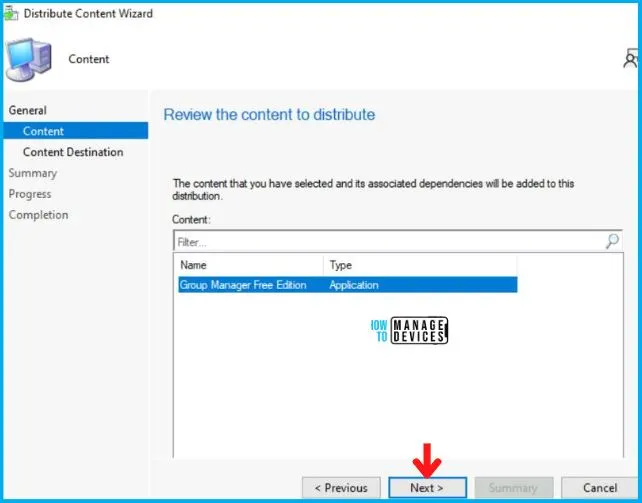
In the Content Distribution tab, click on ADD button as shown in the image below.
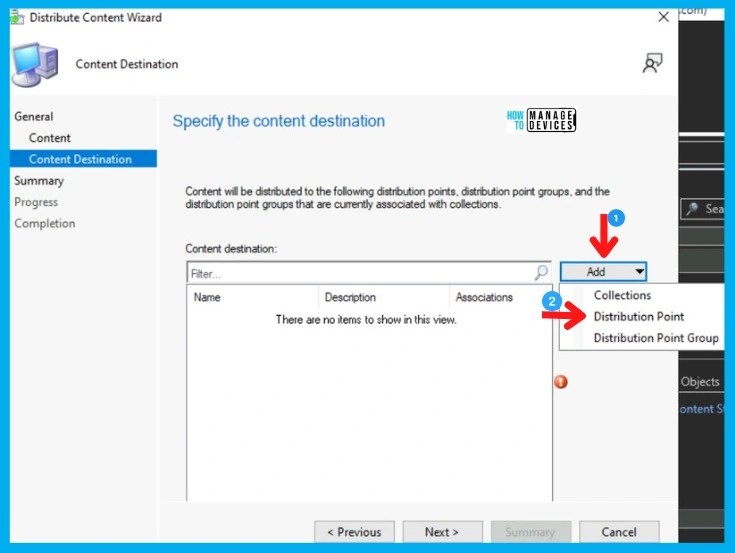
Then Add Distribution Point page will pop up, choose the Distribution Point on which you want to distribute the Application and click on OK, and then on Next.
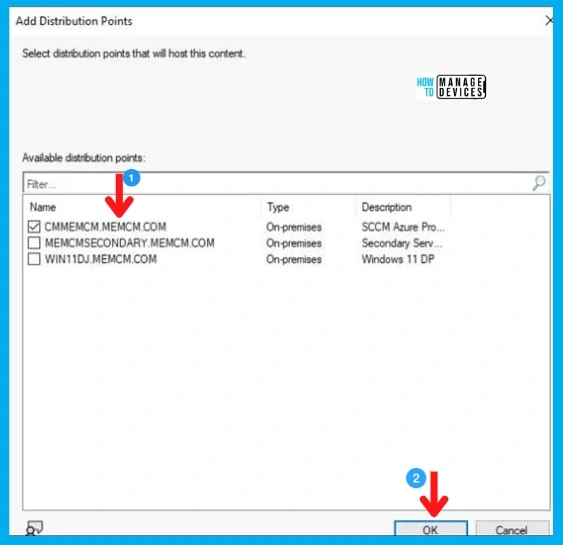
After this, Click Next on Summary Tab and complete this Distribution process by clicking Close in Completion Tab.
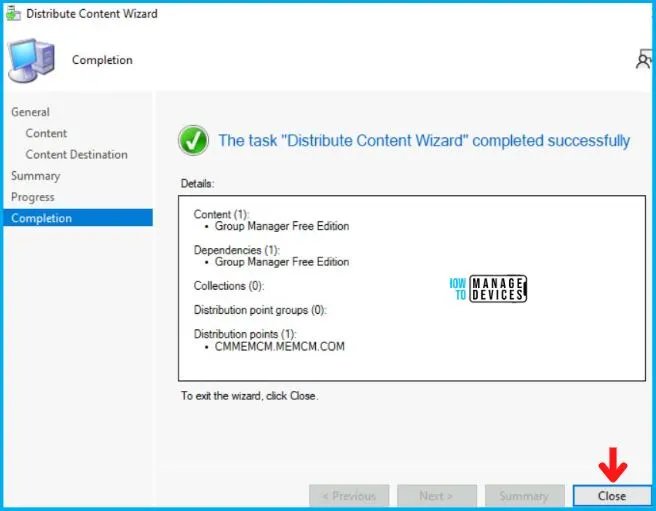
Cjwdev Group Manager Deployment Using SCCM
So as of now, we have accomplished two tasks, i.e., Application Creation and Application Distribution to the DP. Now all left is the Deployment of the Cjwdev Group Manager on the All Windows 10 Device Collection.
- As you can see, your Application is displaying in Application Node, Right-click on Cjwdev Group Manager and click on Deploy.
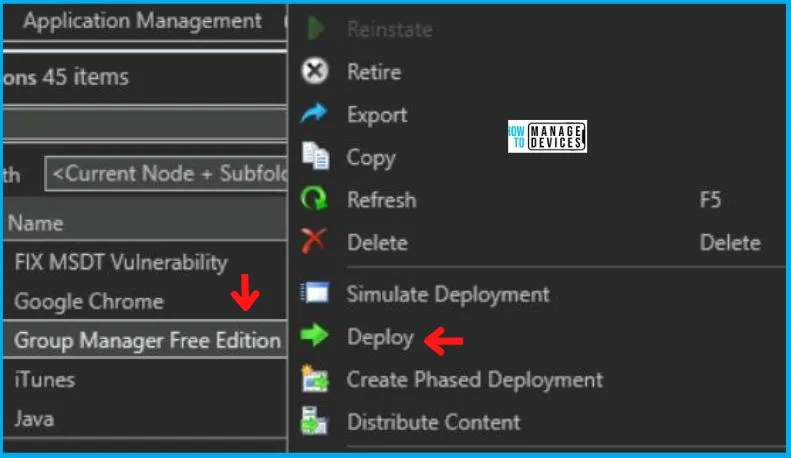
After this, Deploy Software Wizard opens, and in the General Tab, you will see the name of the application in the Name box and click on Browse to select the Collection.
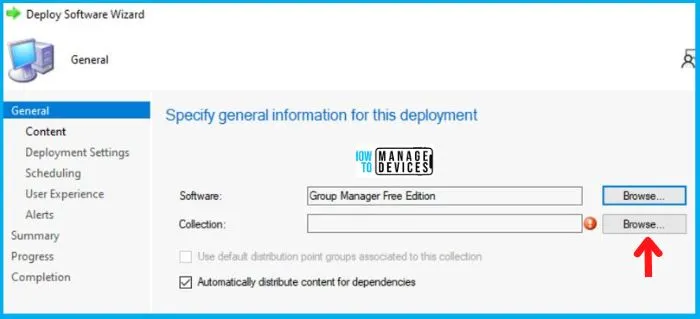
Now the Select Collection page will pop up; choose Device Collection from the drop-down menu, and then
- Select your targeted Device Collection and click on OK, and then Next.
- Here I choose All Windows 10 Devices or Windows 11 Devices
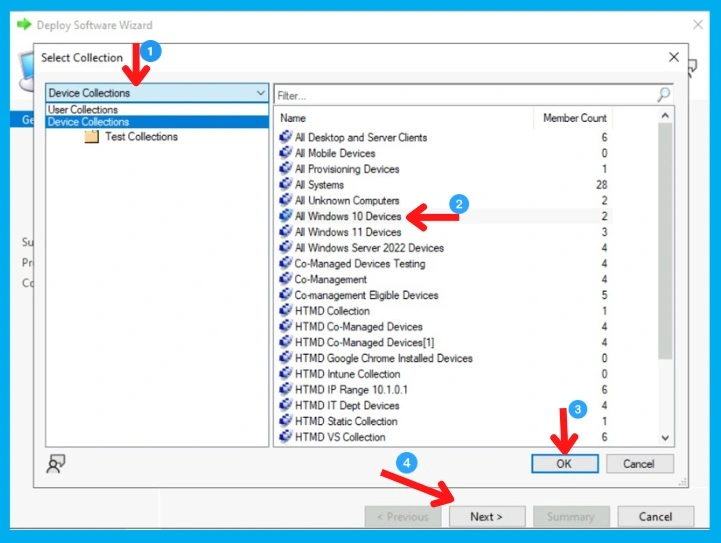
Now in the Deployment Settings Tab, select:
- Install in the Action box
- And choose Available in the Purpose category.
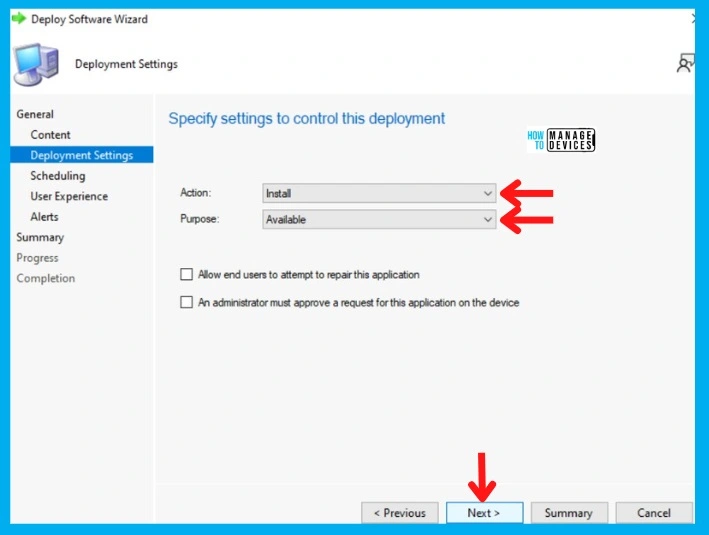
In the Scheduling Tab, enter the time details if you want it to be available at a specific time; otherwise, leave it as it is and click Next. After this, in the User Experience Tab,
- Select Display in Software Center and shows all notification options in the User notifications, and click on Next as shown below.
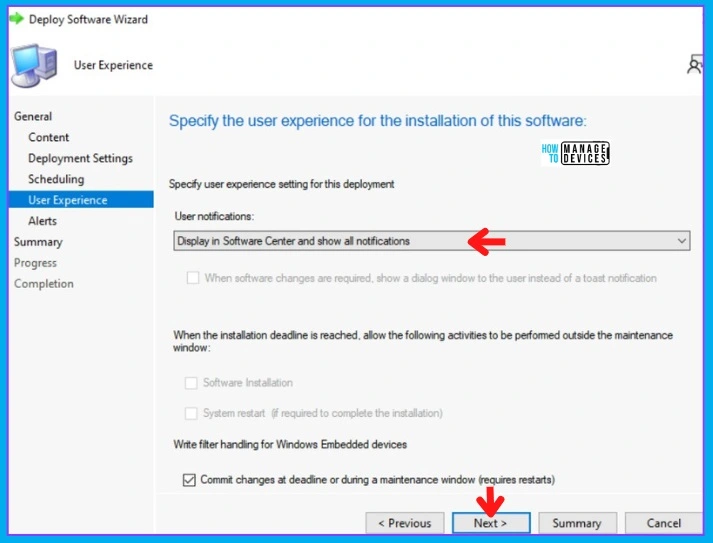
In the Alerts and Summary Tab, click on Next and to end the process, click on Close in the Completion Tab.
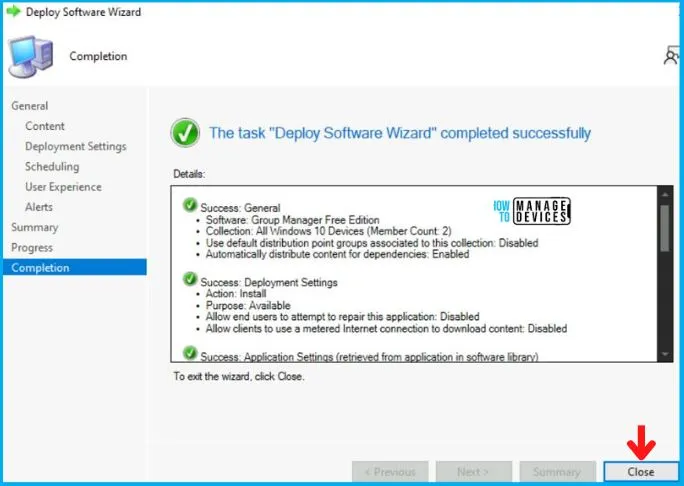
End User Experience – Cjwdev Group Manager Installation
In this section, we will check the end-user experience for Cjwdev Group Manager Application Deployment and Installation. The Cjwdev Group Manager Application is Created, Distributed, and Deployed.
Now, if you check the Software Center of Win 10 device from the Windows 10 Device (or All Windows 11 Device) Collection, you will see the Application in Available Mode, and the user can install it as per the requirement.
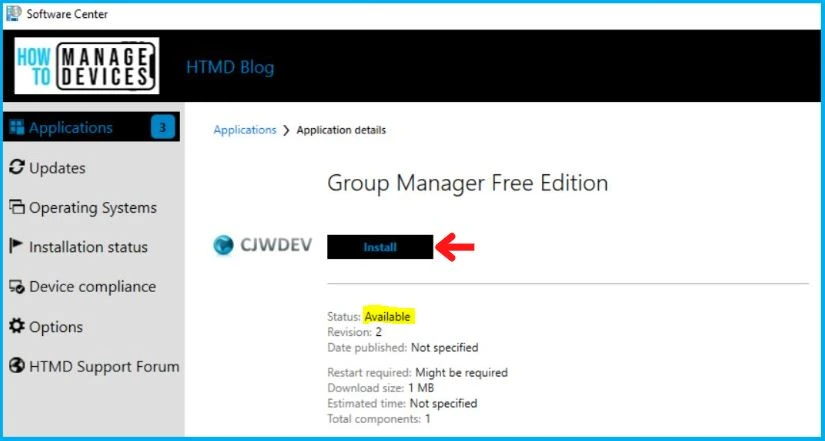
SCCM Windows Error 0x643(1603)
As you can see in the below screenshot, the Cjwdev Group Manager Application is installed successfully on Windows 10/11 devices. This means that there is some issue with creation, distribution, or deployment. For that, we need to check the logs to know exactly what went wrong.
The SCCM Windows error => 0x643(1603) This error could be because of many reasons as explained by Jitesh -> FIX: SCCM Application Installation Failed Unmatched Exit Code 1603.
In this scenario, there is a dependency or prerequisite to have DotNet Framework 3.5 installed on the device before installing GroupManagerFreeInstaller.msi.
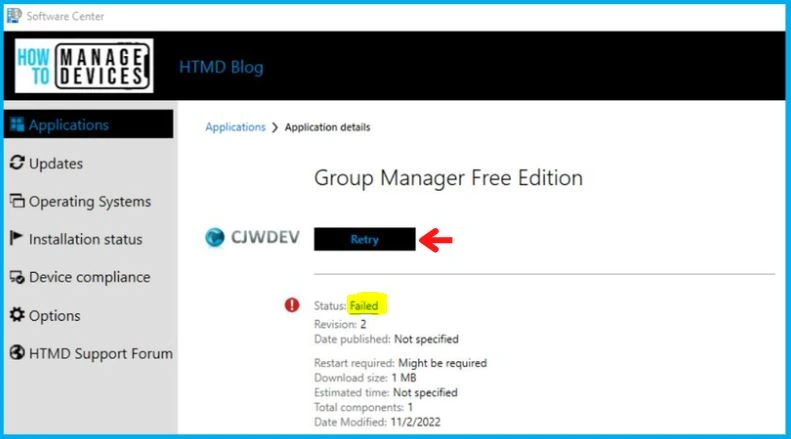
We now check the log files to get a clear picture. As the device is available in Software Center so we don’t need to check the Policy Agent log as the machine is getting policies correctly. Here we are checking with the AppEnforce.log to know what went wrong.
The advertised application will not be installed because it might be unsafe
You might also get a weird error when you try to install Group Manager Free Edition MSI manually – This advertised application will not be installed because it might be unsafe. Contact your administrator to change the installation user interface option of the package to basic.

Author
Abhinav Rana is working as an SCCM Admin. He loves to help the community by sharing his knowledge. He is a BTech graduate in Information Technology.
